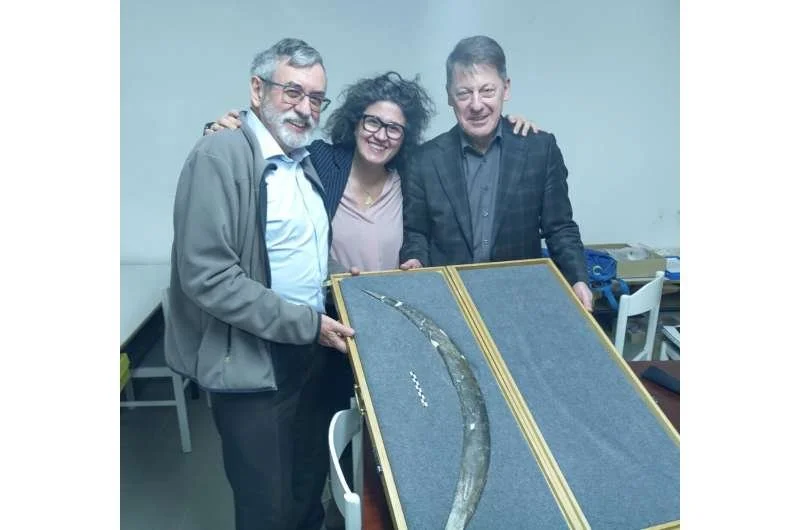The discovery of a 3,400-year-old pyramid in Kazakhstan has sparked interest among archaeologists and historians worldwide. The structure, uncovered near the Taldy-Nura River, is believed to be a multipurpose edifice, serving both as a mausoleum and a ceremonial site.
This new find is part of ongoing research by the archaeology team from Karaganda University, marking their fourth season at the excavation site. Under the guidance of Dr. Aibar Kassenali of the National Museum of the Republic of Kazakhstan, carbon dating has traced the pyramid's origins to between the 14th and 12th centuries B.C., placing it within the timeline of the Begazy-Dandybai culture. This culture, which prospered from the 13th to 10th centuries B.C. in what is now central Kazakhstan, Kyrgyzstan, and Uzbekistan, is known for its unique burial practices, including kurgans and megalithic mausoleums.
Credit: Dr. Aibar Kassenali
The archaeological team has unearthed a wealth of artifacts within the pyramid's burial chamber, including decorated ceramic vessels, a bronze and gold-ringed arrowhead, and a piece of pottery with markings reminiscent of an early writing system. These findings, along with the discovery of a skull believed to belong to an Andronovo tribe chieftain, reinforce the theory that the pyramid served as a royal burial site.
Dr. Kassenali draws parallels between the Taldi River valley and Egypt's Nile Valley, suggesting that the region was a "valley of kings" for the Andronovo communities, where they entombed their prominent leaders.
Credit: Dr. Aibar Kassenali
The Karajartas pyramid, with its precisely cut stones and considerable size, reflects the advanced artistic sensibilities and spiritual beliefs of the Begazy Dandybai culture, even in the arid steppe environment of the Bronze Age.
Further evidence suggests that the Karajartas mausoleum was more than a final resting place for the deceased. It was a significant cultural and religious hub where sacred ceremonies and rituals were performed. Rock art in the area indicates that the inhabitants had an understanding of solstices and celebrated astronomical events with festivities.
Credit: Dr. Aibar Kassenali
Moreover, the discovery of a proto-city settlement named Kent near the pyramid adds another layer to the historical significance of the region, hinting at a complex and sophisticated society.
The narratives of ancient historians like Ctesias of Cnidus and Diodorus of Sicily, which recount the Scythian-Mede wars and the reign of a queen named Zarina, provide historical context to the significance of triangular tombs in the region.
Credit: Dr. Aibar Kassenali
As excavations continue, the multifaceted purpose of the Karajartas mausoleum and the broader implications for our understanding of ancient central Asian cultures are expected to become clearer, offering a richer narrative of the human past.











